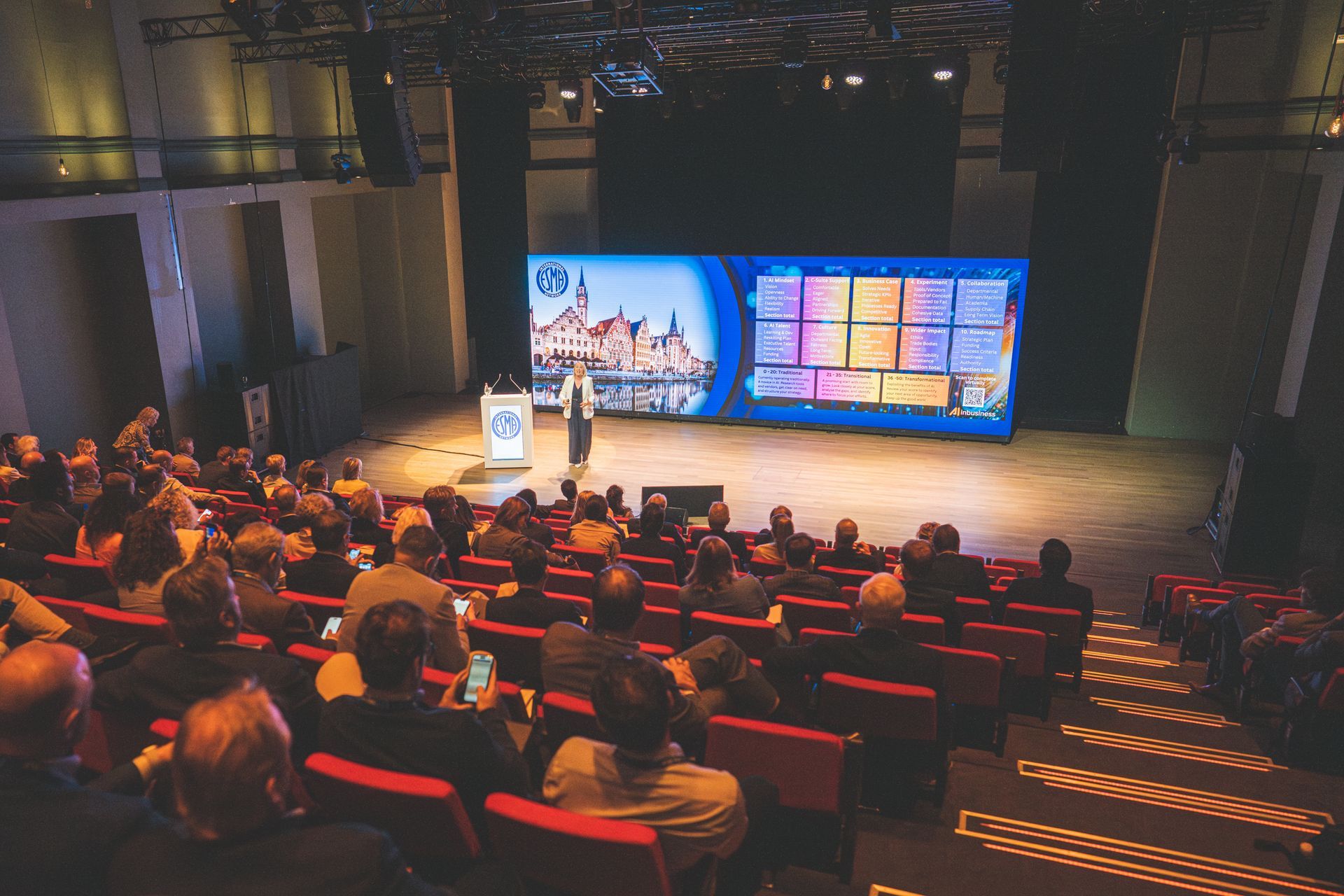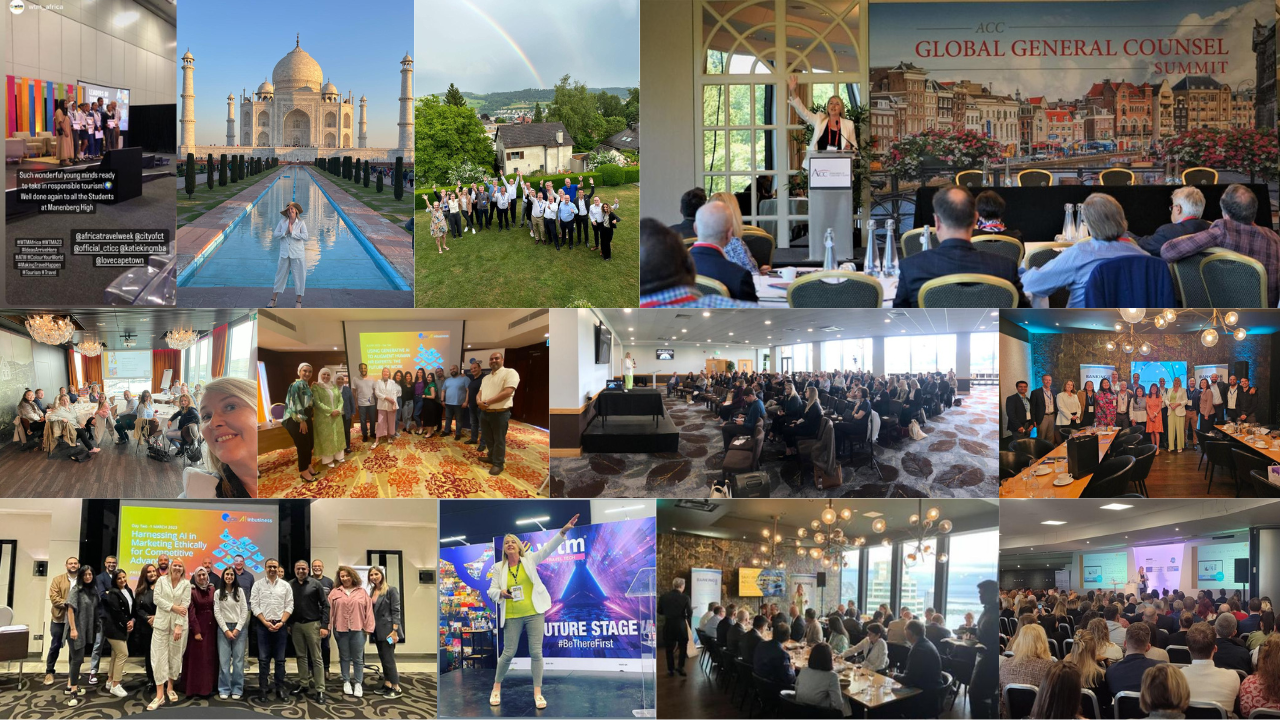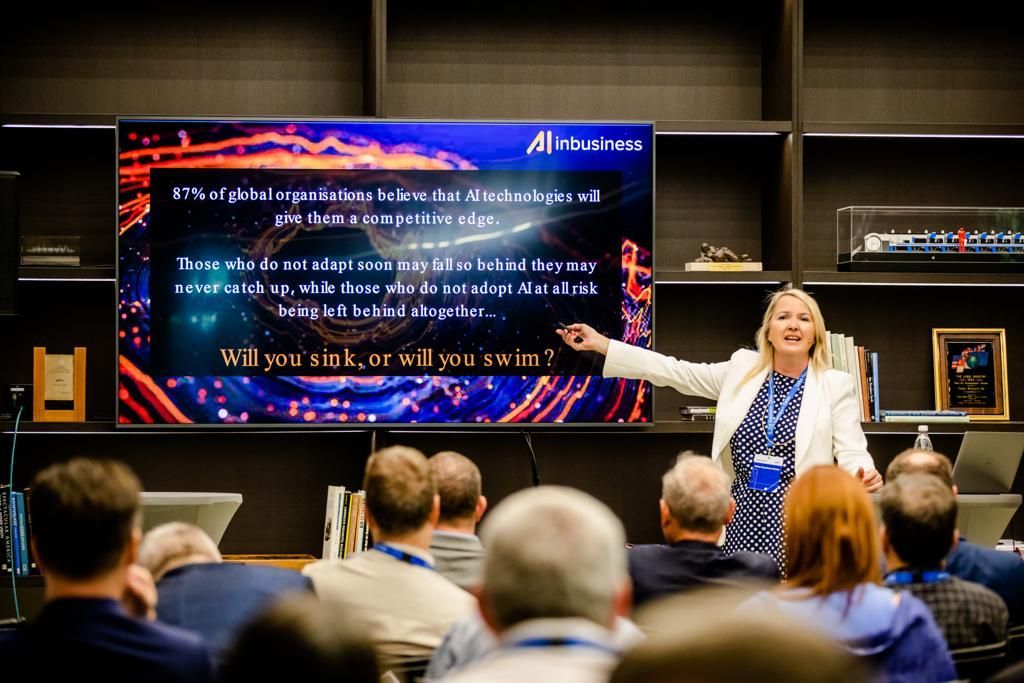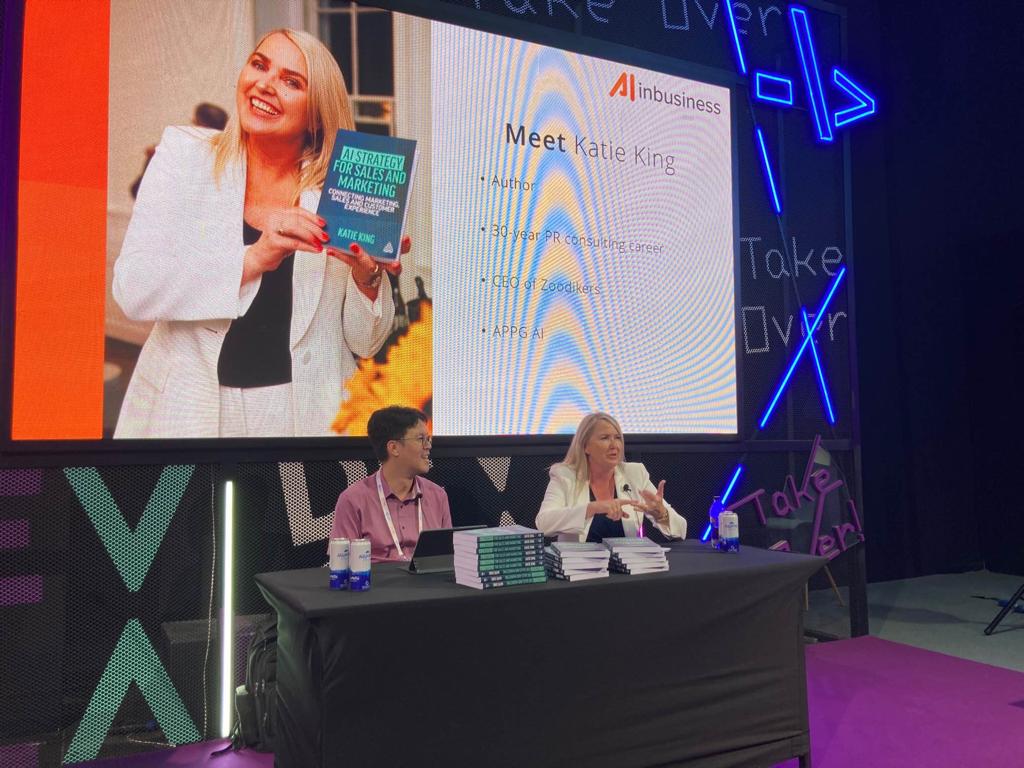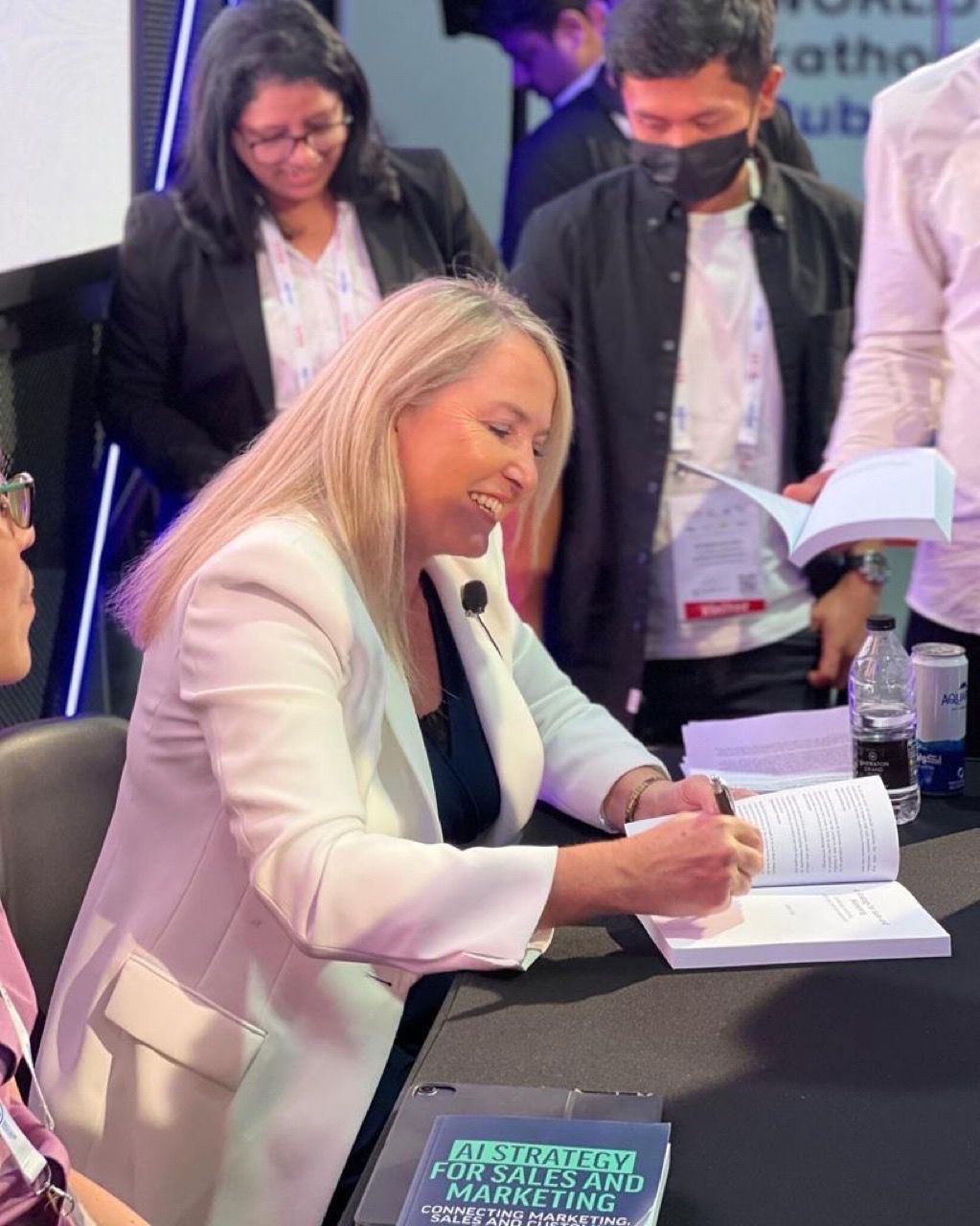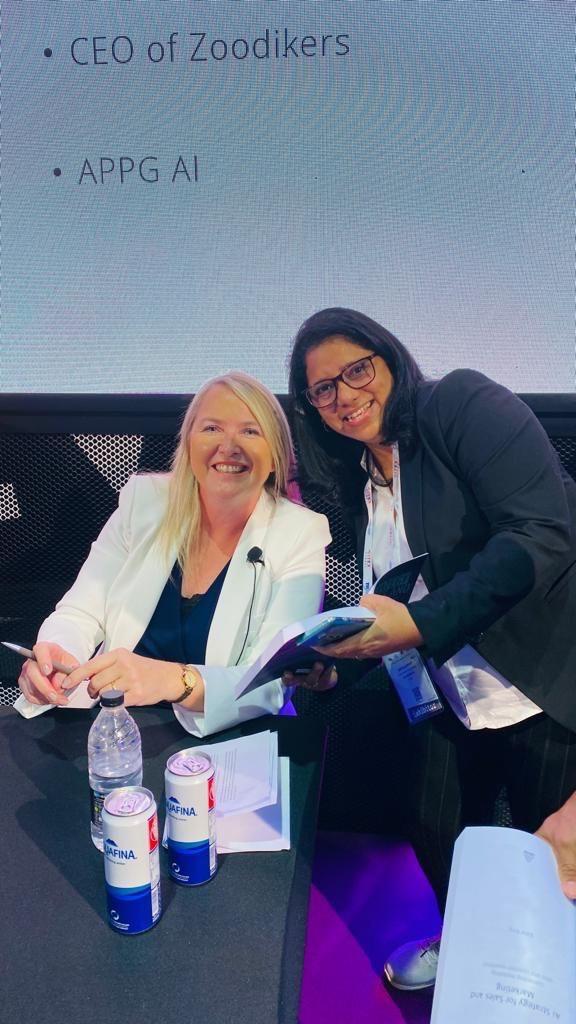In Conversation with Katie King at GITEX 2022
October 12, 2022
On 11 October 2022, AI in Business CEO Katie King participated in a fireside chat and book signing for AI Strategy for Sales and Marketing at the Global Dev Slam event in Dubai. Global Dev Slam is one of several events that make up GITEX Global, the world’s largest tech show.
Read on to hear what Katie had to say about the development of her second book and the future of AI across business functions.
What prompted you to write AI Strategy for Sales and Marketing?
I wrote my first book, Using Artificial Intelligence in Marketing, in 2018 and it was published at the start of 2019. Back then, AI was still a pretty new thing. People had heard about it but mostly in science fiction contexts, so very few businesses had really begun exploring it. Then of course, the pandemic hit in 2020 and changed just about everything. Businesses started doubling down on digital transformation and looking for any solutions that might help solve the problems and setbacks that COVID had created. As a result, we just got this huge boom in businesses looking to adopt AI and learn all they could about it.
The thing about AI, though, is that it moves quickly. Developments happen swiftly and often. Despite my book being only a year old at the time, so much more had happened in the world of AI and business since it was published and I didn't want to fall behind. Not only that, but the first book is very much marketing, PR, and comms focused, while AI is reshaping every business function there is. I found myself wanting to talk about that. I wanted to provide a resource for those interested in AI to turn to in order to understand the implications of this technology on their job or industry.
The time I spent consulting and training after the publication of my first book taught me a lot. I found that with most of the clients I worked with, the first step in the AI journey was often the hardest one. Book 1 has my Scorecard for Success in it, which has proven to be a useful tool for assessment of AI projects, but I also wanted to help people get started. I wrote this book with my STANDARDISE Framework in mind to provide professionals with a set of considerations to make at the start of their AI journey and something tangible to take away from the book.
Really, it was a combination of wanting to keep pace with the fast-moving world of AI, wanting to expand my reach beyond just marketing and PR into other business functions, and wanting to share a lot of what I’d learned about AI from helping businesses prepare for and adopt it.
Can you share a bit about your writing journey for your second book as compared to writing your first?
For the first book, I was covering largely unexplored territory. There were case studies out there, but they were a bit limited. At that time, AI still felt like this far out thing and still somewhat speculative. That had changed by the time book 2 rolled around. Book 1 had opened a lot of doors for me personally. Using Artificial Intelligence in Marketing led me to some pretty fantastic opportunities and put me in contact with some really interesting people. Following the book, I made AI my main business focus and opened my consultancy, AI in Business. I spoke at various conferences and events around the world and worked with businesses privately. I gained a lot of first-hand insight, while at the same time more businesses began tuning into AI and implementing it. So by the time book 2 rolled around, I had so much more material to draw from.
Not only that, but I also had many amazing contacts who were willing to participate as contributors and share their knowledge with me. I had excellent interviews in my first book as well, but the second time around I was able to pull together a really diverse and knowledgeable group to advise on so many different areas of this subject, and I think the book really benefited from that. It certainly made writing this book a pleasure to do.
The conditions in which this book was written were also completely different than the first one, and I think they really reflected where we were in the world at the time. I got started on book 2 during the UK’s second national lockdown, right before Christmas time. Couldn’t do any of the usual festive stuff. Couldn’t really go out to the shops. Couldn’t see family. But what we did have was technology. And that technology had gotten us through this challenging and isolating time by just enabling us to continue on, just with different practices. And I found that somewhat inspirational, because in a lot of ways that’s exactly what AI is doing. It’s taking our new circumstances and offering us a new way of doing things.
In your book, you have a chapter titled, “Flourish or Self-Destruct.” What do you think is the deciding factor between flourishing and self-destruction for humanity right now?
The deciding factor will be how we choose to use this technology and whether we allow it to negatively impact society. While AI is not inherently bad or biased, it is a product of the data it is trained on. If you put rubbish in, you get rubbish out. Therefore, we need to be mindful of what we are inputting into these algorithms and how that might impact the results produced. But what does that look like?
Say, for example, you’re looking to use AI for your hiring and recruitment. You would train the algorithm using data about your current staff and likely data from past successful employees. That information will train the algorithm to identify what a ‘successful’ candidate for your organisation looks like. That can be great for finding you talent that may be a good culture fit. But consider this. If your organisation is predominantly male and white, you’ve just taught the algorithm to find more white male candidates. You may be overlooking candidates who would be perfect for the role simply because they do not match the criteria set by your data. That means less opportunities for groups who may already be underrepresented.
We saw similar issues with the use of facial recognition in law enforcement, as it was resulting in racial profiling. These technologies may be well intentioned, but if trained improperly or not given proper oversight, they become harmful. When they become harmful, that raises ethical concerns.
Circling back to the question, the way we avoid self-destruction is by knowing that these outcomes are possible and working to avoid them. We need to consider human impacts alongside business impacts, as the two will sometimes conflict. AI can do some remarkable things and create unbelievable value for business, but we must not let financial gain outweigh negative impacts on our communities.
What are some of the most interesting case studies in your new book?
I had the good fortune of speaking to many amazing people across AI, business, education, government and so on for this book. I think all the cases I compiled, whether they were from interviews or my own research, are really fascinating personally. But I’d say the Phrasee/Dixons Carphone and Nissan cases are some of the most interesting. Without getting too deep into it, the Phrasee and Dixons case is a great example of how AI helped brick and mortar businesses get through the pandemic, while the Nissan case is an excellent example of allowing your customers to be a part of your business.
Which of the case studies in your new book made the biggest impression on you, and why?
I am personally very impressed by every case study found in Chapter 7. This chapter is called ‘New economic model for the robot revolution,’ and focuses very heavily on education. This is an area that I am personally very passionate about and have done some work with through my own AI schools initiative, so I find the use of technology in this area particularly fascinating. There are so many schools that are using AI tools to personalise the learning experience for every individual student, which means we are no longer relying on one-size-fits-all educational experiences and better preparing young people for their futures. This technology is also being leveraged in training contexts, which will certainly help businesses navigate the talent challenges they’re currently experiencing. I think this chapter helps to paint a picture of what we could be, rather than what we are.
Can you read us a line or two of your favourite part of the book?
“AI is the defining technology of our times and we have a choice. The power is in our hands, and the responsibility is a heavy one.” This is the first line of a section titled ‘A fork in the road,’ which is found in Chapter 9: ‘Flourish or self-destruct? The case for responsible AI.’
I feel this line sums up everything we learned in the first 8 chapters and provides a good intro to the subject matter of this chapter, which focuses on some of the ethical and societal considerations that come along with adopting AI. The first 8 chapters of the book do a great job of covering the various financial or business impacts of this technology, but Chapter 9 is an essential inclusion because those enterprise impacts will have real work implications. Yes, AI gives us the power to do some incredible things and unlocks this newfound potential for us all. But with that power, we have responsibilities to do right by others in our society and the world at large.
I like this line because it carries the weight of that trade off and puts AI into perspective. We’re in the midst of a world-altering transformation, and while there’s a lot of good that will come of it, that can only happen if we use our newfound power responsibly.
How do you think AI will affect the world of business generally, beyond just marketing?
AI will impact just about every business function across every industry, and already is beginning to. We already have so many proven use cases across sales, HR, operations, manufacturing, etc., and that will only grow with time. It’s already being used for hiring and retention, lead acquisition and scoring, safety, compliance, routinised maintenance, and beyond. Just as marketing will reshape to incorporate AI, so will all these other functions. What you get as a result is a way of doing business that is far different from what we have now, streamlined by technology working together with humans to produce better outcomes. That will result in better customer experiences across the business, increased efficiency, better use of resources, stronger teams, more engaged employees, and so much more.
AI Strategy for Sales and Marketing is available now from your favourite bookseller. To learn more, click
here.
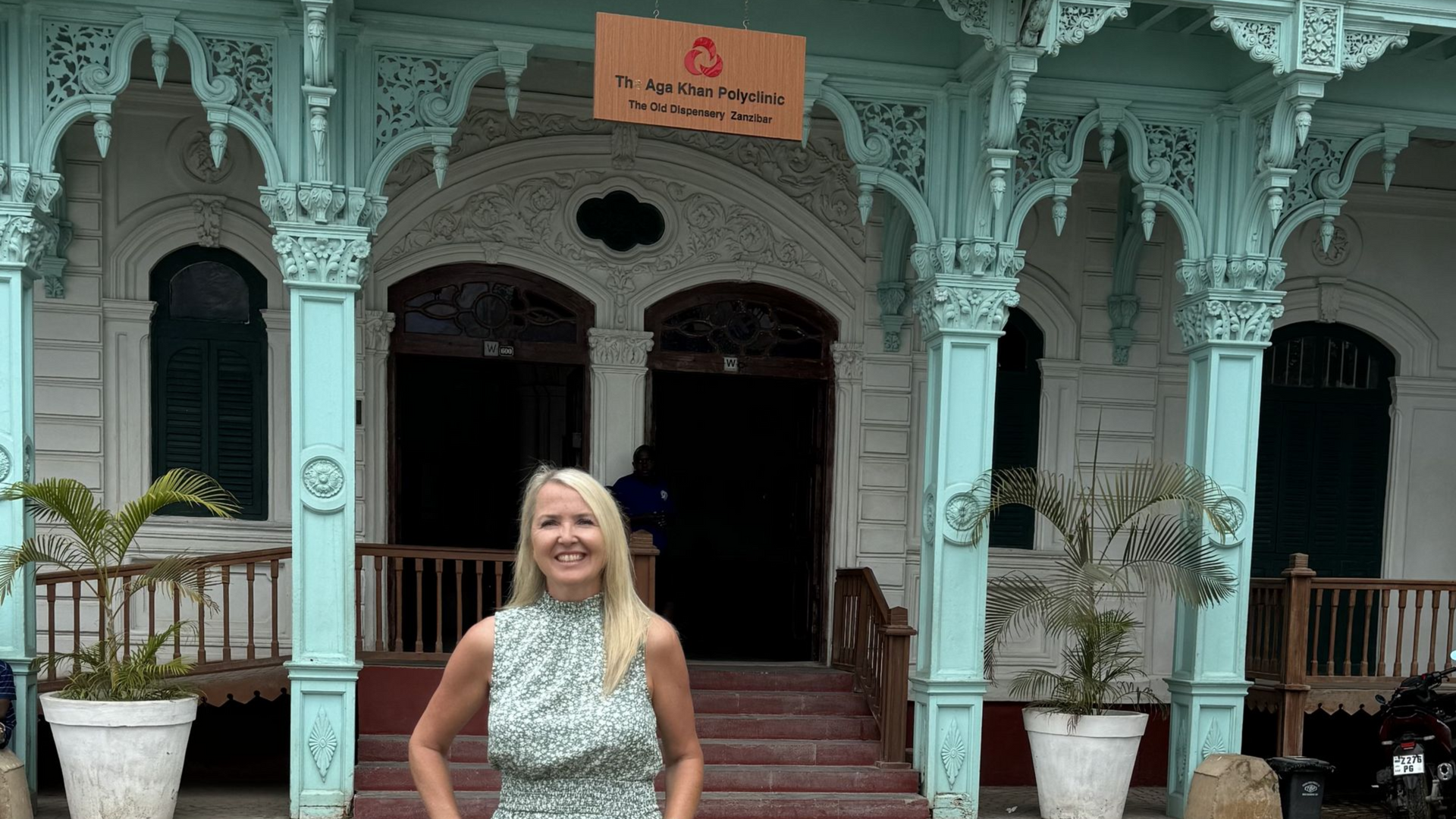
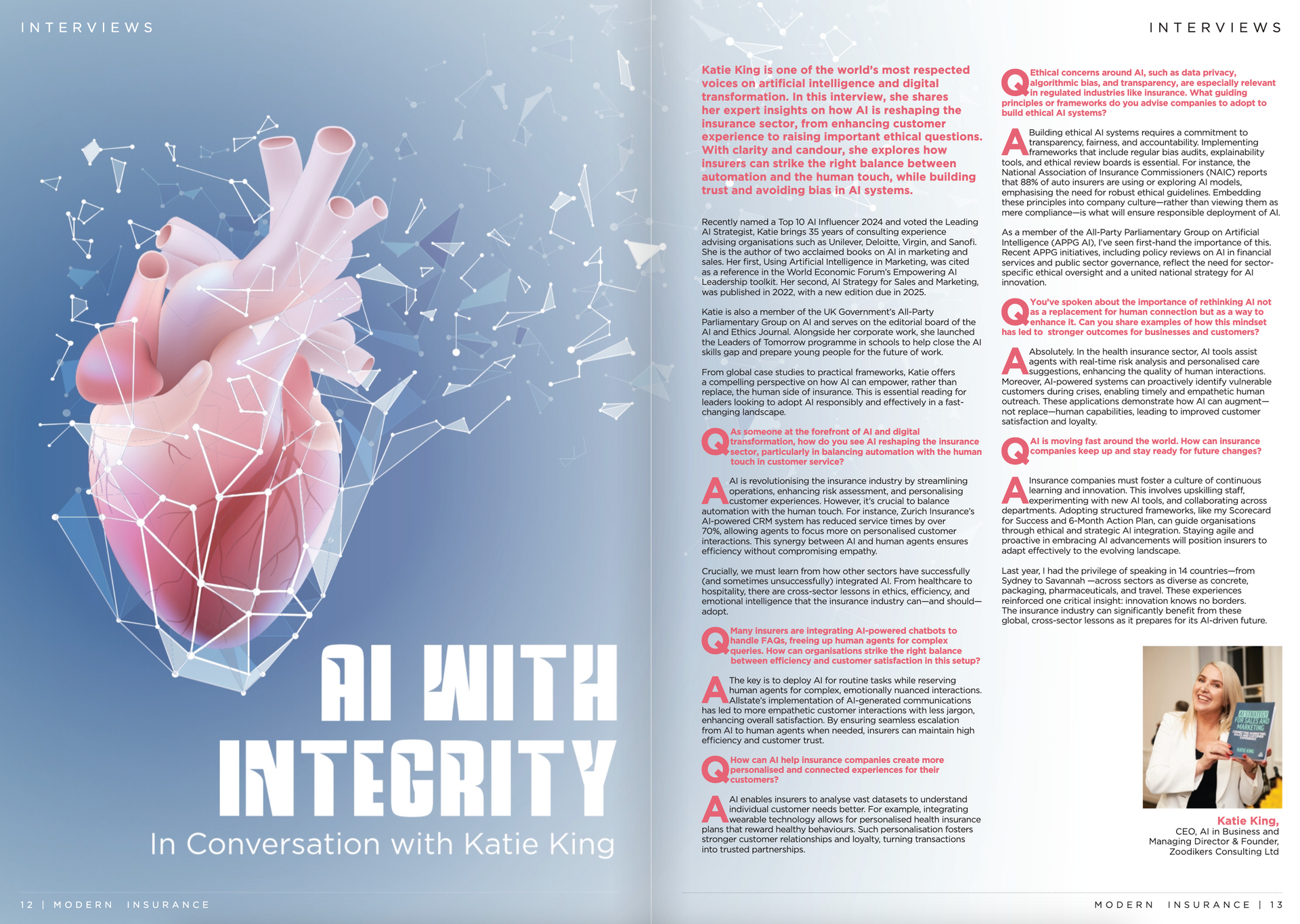
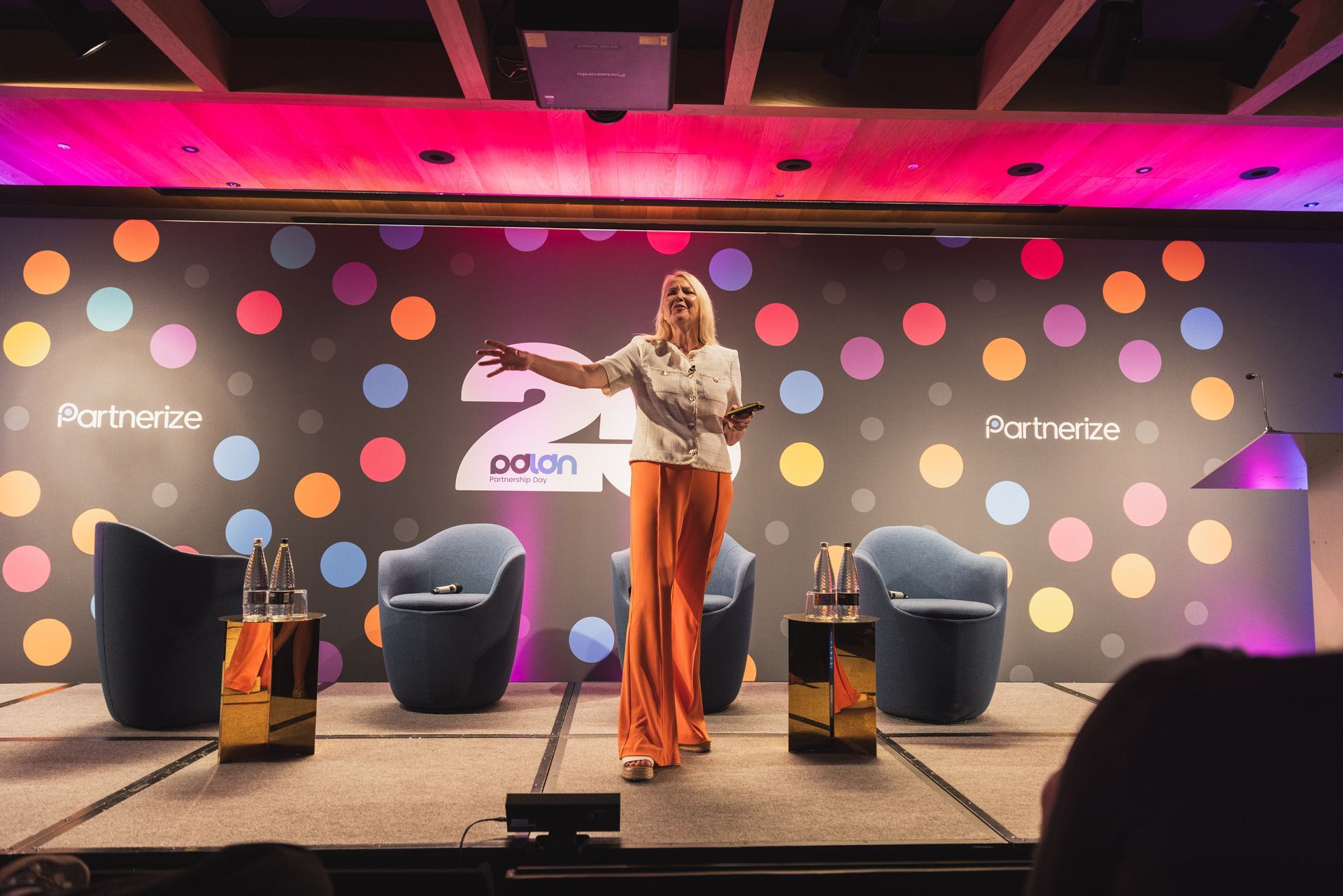
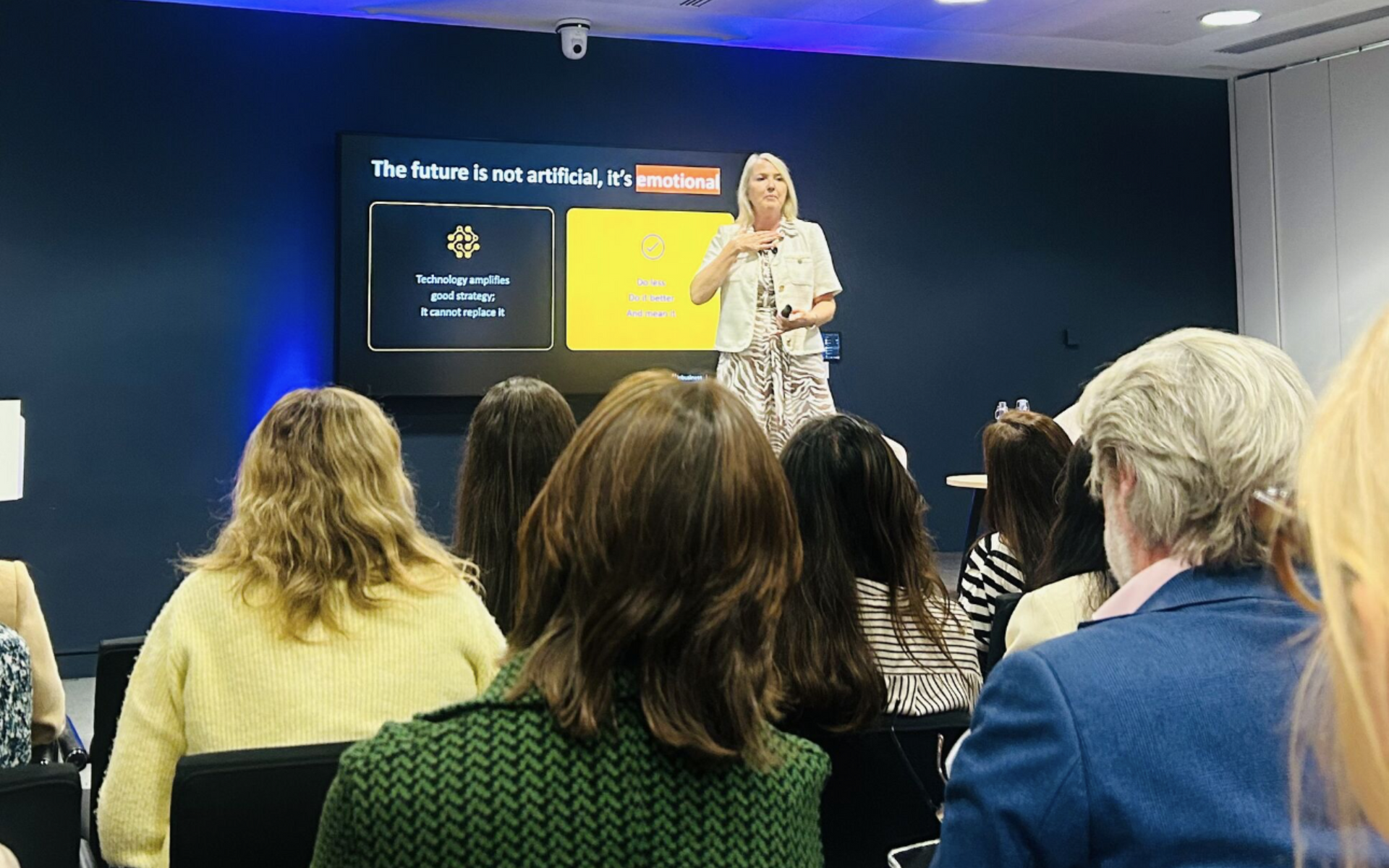
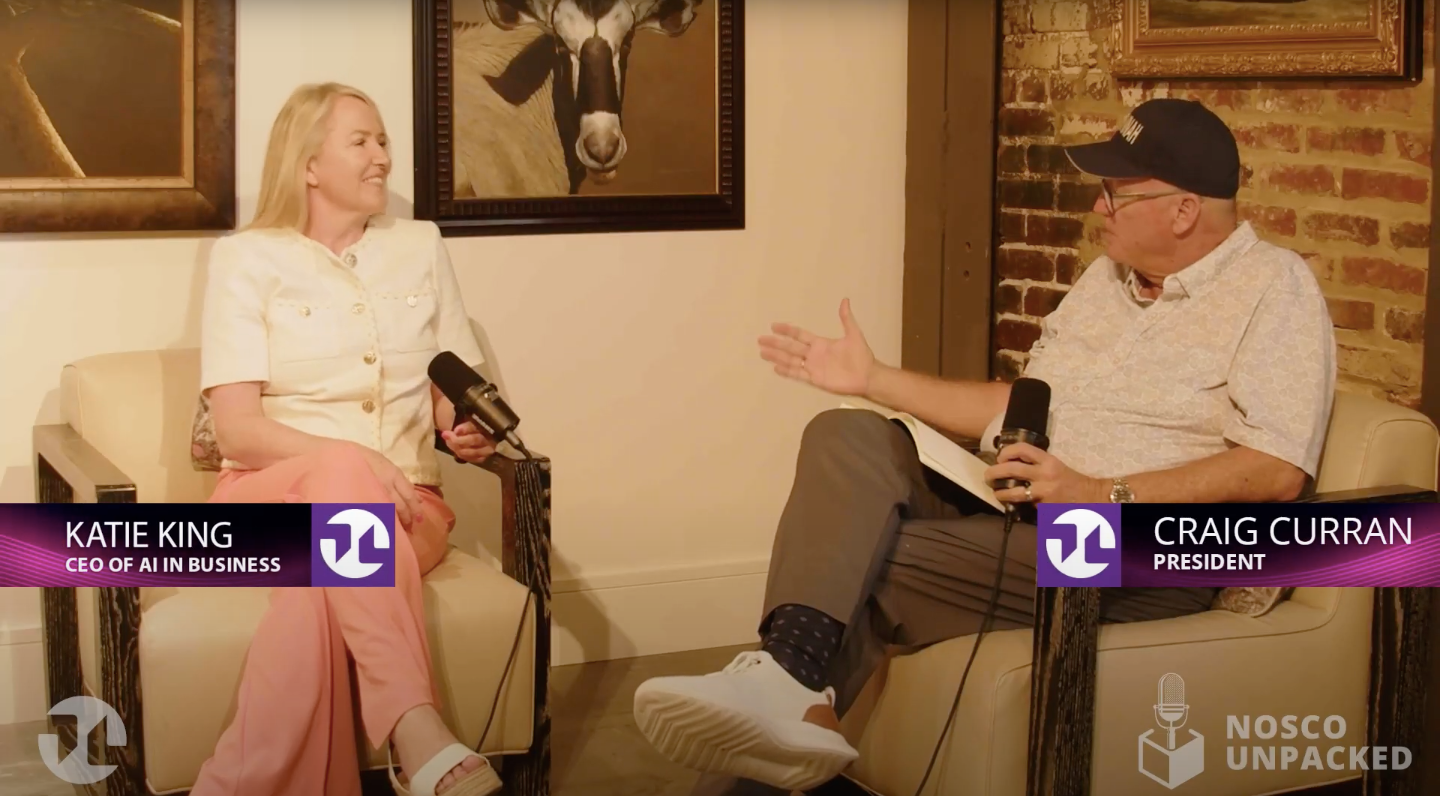
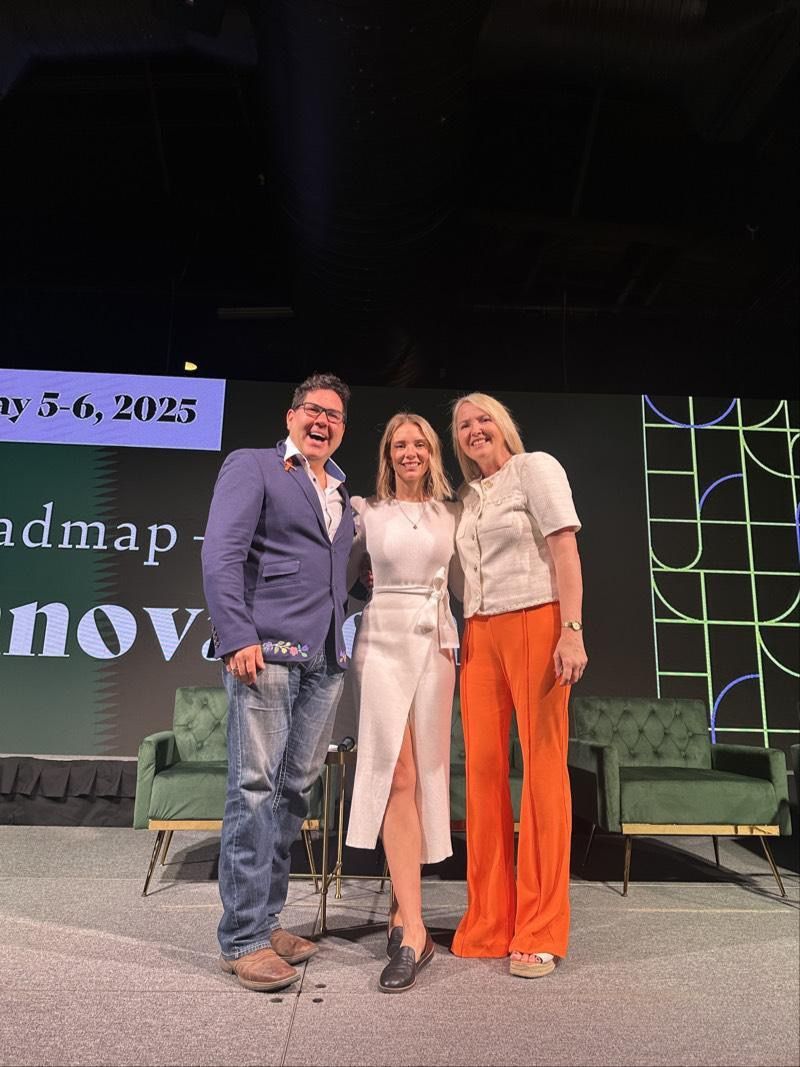
Inaugural Prairie Business Summit, hosted by Edwards School of Business, University of Saskatchewan.
